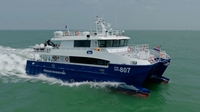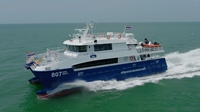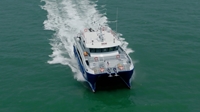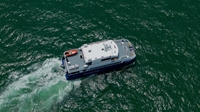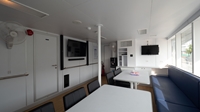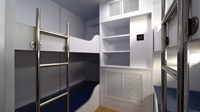Thailand’s Department of Marine and Coastal Resources (DMCR) has taken delivery of a new state-of-the-art research vessel designed by leading digital shipbuilder Incat Crowther.
The Incat Crowther 25, built by Thai shipbuilder Seacrest Marine, will be used by the DMCR to patrol Thailand’s coastal environments and monitor the nation’s fisheries and marine resources.
Based on a proven Incat Crowther design, the 25-metre catamaran has a range of innovative features and equipment to help its crew monitor and protect sensitive coastal areas while having minimal impact on the environment.
Designed to accommodate 12 crew and 16 passengers in six sleeping quarters, the main deck features three of the vessel’s sleeping quarters, five bathrooms, a large mess, an outdoor dining area, galley and a conveniently located storeroom.
The upper deck features an office and operations control room with a day head and an ensuite cabin for the captain. The large wheelhouse has been designed to optimise the captain’s line of sight, while the upper deck also provides storage for a tender and jet ski – both readily available for fast deployment via a strategically positioned crane. The hull deck features three crew cabins.
Tanapat Hemangkorn, Managing Director of Seacrest Marine, said the on-time delivery of the new research vessel to the DMCR is testament to the cooperative and collaborative approach employed by Incat Crowther, Seacrest Marine and the DMCR.
“Incat Crowther’s approach to digital shipbuilding helped support the success of this project from the bid stage all the way through to delivery. Seacrest Marine and Incat Crowther have a track record of successfully partnering on a range of projects, with the delivery of this vessel being the sixth Incat Crowther design, yet another example of our thriving partnership,” said Mr. Hemangkorn.
Incat Crowther’s Technical Manager Dan Mace said: “Using a tried and tested design as a foundation, this vessel has been customised to the DMCR’s unique coastal research and monitoring needs and integrates the latest technological advancements.”
“The market-leading hull design, refined through extensive model tank testing, sets new standards for performance. With a propulsion system enabling maximum speeds of over 30 knots and efficient fuel consumption, this design also maximises operational efficiency without compromising performance,” said Mr Mace.

